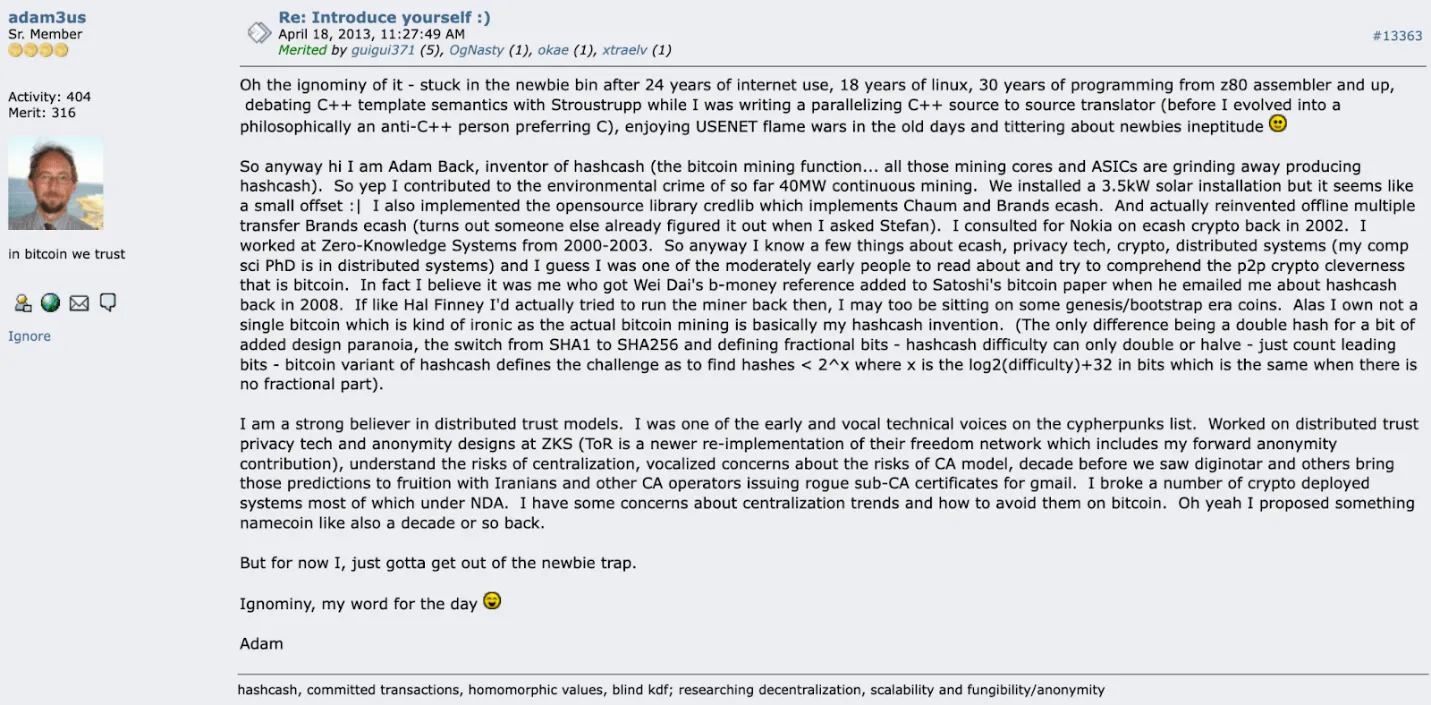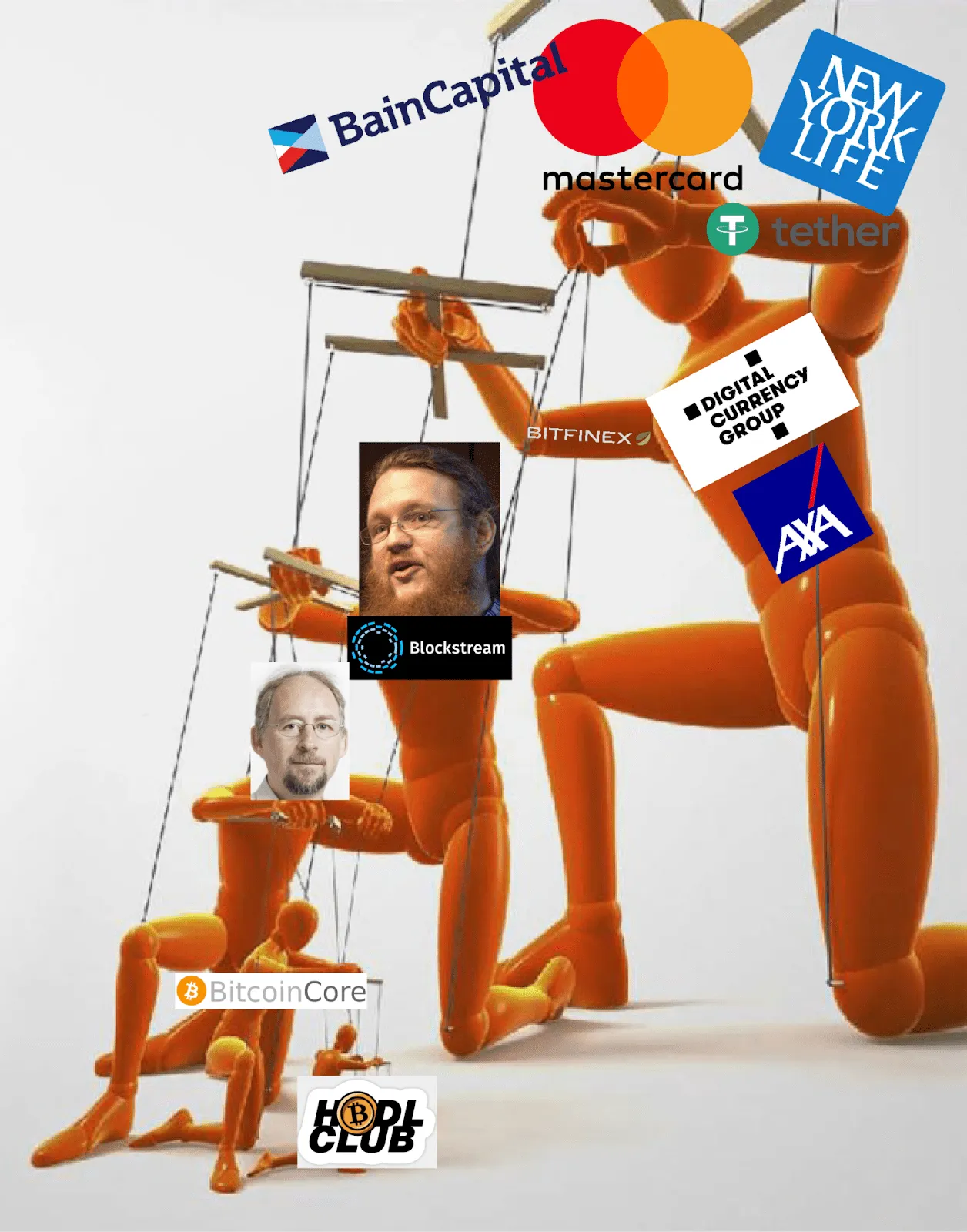|
Getting your Trinity Audio player ready...
|
Who is Satoshi Nakamoto? The pseudonymous creator of Bitcoin was a mystery to the computer science and cryptography world for many years. While Dr. Craig Wright was doxed as Bitcoin’s creator by Wired and Gizmodo in 2015, the politics of Bitcoin have muddied the waters and made a rational discussion of the facts very difficult to have with a mainstream audience. Since then, the term “Faketoshi” has become ubiquitous with anyone who makes personal claims about the muddied history of Bitcoin and Satoshi Nakamoto. This is largely because of the perverse incentives of wealth that have been created in the gray areas where the truth hasn’t shined a light, and this article aims to clarify what it means to be a Faketoshi in 2022.
The small blocker BTC crowd holds a deeply political view about the nature of the Bitcoin protocol and its governance, and therefore gives a lot of weight to candidates who agree principally with their view of permanently small blocks, UASF governance (User Activated Soft Fork), and an ethos of “code-is-law” from the cypherpunk community. While some candidates, like Dave Kleiman, have been proven in court not to have helped create Bitcoin, a great deal of populist candidates still get brought up regularly.
We will explore their histories, qualifications, and why they ultimately fall apart.
Back to the future—kinda…
One of the favorite candidates among small blockers (and this article’s Faketoshi) is Dr. Adam Back: CEO of Blockstream.
Adam Back is a doctor of computer science with a focus on distributed systems from Exeter University. He is a classic cypherpunk, advocate for encryption technologies, and has a history of activism in the digital cash space going back into the 1990’s. Among his accolades is his proficiency in C++ coding, his work with David Chaum, and the fact that he was one of the first two people to receive an email from Satoshi Nakamoto, although these email(s) have never been made public.
Possibly his most interesting accolade is his creation of the “Hashcash” white paper—which was written to illustrate how a proof of work can mitigate the problem of email SPAM and general denial of service (DoS) attacks.
Despite the fact that Hashcash was never implemented anywhere, Blockstream leans heavily on this reputation in ways that are just not true. This isn’t to take away from the fact that Satoshi Nakamoto did indeed reference Back’s Hashcash white paper in the Bitcoin white paper as an influence on Bitcoin’s proof of work.

Many people point to Adam Back being a great Satoshi candidate because Satoshi used British idioms and spelling in his writing style alongside the fact that he was proficient in C++ programming. This is a fine starting point, but there are many other people around the world who have such resume items including Dr. Craig Wright. An interesting point is that Back tends to use a double space after periods, and so too did Satoshi Nakamoto. This starts to creep toward being a significant data point, but upon further research, this practice is common among everyone who learned to type during the era where today’s “over 50” crowd learned how to type (on typewriters.)
In fact, Microsoft didn’t even start treating the double space after a period as an error until 2020!
So, we’re given lots of very broad data points initially in the search for Satoshi and a spotlight on Adam Back.
But it all falls apart
The reason Back rapidly devolves into a Faketoshi is actually very simple. He was never particularly interested in or opinionated about Bitcoin. Even after being referenced in the Bitcoin white paper, Back seems to have completely ignored Bitcoin until the first bull cycle in 2013 when he suddenly popped up and introduced himself on BitcoinTalk. He states that he owns none, but the manner in which he writes is clearly trying to take some credit for Bitcoin’s successes due to lessons learned from Hashcash.

Honestly, in and of itself, this post is benign, and Back actually seems like a pleasant gentleman by most measures at this point in Bitcoin’s story. And his experience in applied cryptography, e-cash and other things was actually useful, especially when Adam seemed like a bitcoin pragmatist.
Remember, he was even amenable to the big blockers for a short window of time!
Strongly agree. My suggestion 2MB now, then 4MB in 2 years and 8MB in 4years then re-asses. (Similar to BIP 102) https://t.co/1VjeF0SRP0
— Adam Back (@adam3us) August 26, 2015
But as soon as the venture capital began looking for figureheads to prop up in order to seem decentralized while actually consolidating power back to the old banks and payment processing companies, Back had just the right amount of street credibility to be repacked into a safe CEO for Blockstream—the small blockers’ main hub of thought leadership and professional software engineering.
So, with venture money stemming from the titans of finance like Mastercard and New York Life, Blockstream appointed Adam Back as a de jure Satoshi Nakamoto for their reimagining of the Bitcoin protocol. Technical roadmaps would come from Gregory Maxwell, control of the repo from Luke Dash Jr, and Adam Back at the top of the pyramid benefitting fully from one single reference in the Bitcoin white paper. With a light peppering of assumption that Back could have actually been the creator of Bitcoin, the bitcoiners all got censored out of the discussion if they had any practical criticisms of the small blocker narrative or the roadmap of Blockstream’s commercial sidechains and “layer 2” solutions like Liquid and Lightning Network.

So, the kind old godfather cypherpunk suddenly went from a bumbling piece of e-cash history into the CEO of what is today a $4 billion company owned and controlled by legacy banking interests.
What evidence?
The lack of evidence is the most astounding part of people’s claim that Back could be Satoshi, so rather than debunking anything serious, his Faketoshi status hinges on the fact that there really isn’t any compelling evidence found anywhere.
This is in addition to the fact that Back clearly had an immature and shallow view on the Bitcoin protocol in the first place, which is apparent in his waffling on various concepts (such as the block size limit), and his indecision about vision, roadmap and Bitcoin’s purpose in the world during the block size debate between 2015 and 2017. And more recently, Back has changed gears on the cypherpunk notions of fiat currency, and even the controversial Tether stablecoin.
It is notable that iFinex, Tether’s parent company is now a major investor in Blockstream and after that investment, Adam Back converted into a Tether cheerleader.
The FUD around Tether is being repeated in publications without citation, please do not repeat @bitfinexed FUD, it does Tether a disservice. Tether is the biggest fiat coin, and no other fiat coins to my knowledge have particularly clearer audits.
— Adam Back (@adam3us) March 4, 2019
And furthermore, how could Satoshi have switched from statements like this: “The existing Visa credit card network processes about 15 million Internet purchases per day worldwide. Bitcoin can already scale much larger than that with existing hardware for a fraction of the cost. It never really hits a scale ceiling. If you’re interested, I can go over the ways it would cope with extreme size. By Moore’s Law, we can expect hardware speed to be 10 times faster in 5 years and 100 times faster in 10. Even if Bitcoin grows at crazy adoption rates, I think computer speeds will stay ahead of the number of transactions.”
And then later become the figurehead of a company built on the premise that Bitcoin was not meant to be a payments technology?
It is inconceivable.
In conclusion, Adam Back seems like more of a patsy than anything else; a man who got very lucky to be in the right place at the right time with a handful of credentials that put him within the penumbra of possibilities for having contributed to bitcoin as Satoshi Nakamoto. And (to his credit) let’s not take away the fact that he has vehemently denied any connection to the founder of Bitcoin outside of his contribution of the Hashcash reference in the Bitcoin white paper. But his lack of firm vision, and truly the utter lack of any concrete evidence makes it quite simple to write him off as just another Faketoshi.
Will the real Satoshi Nakamoto please stand up? Read the CoinGeek series exposing the Faketoshis: the men who are not Satoshi—from Nick Szabo to Adam Back, and more.

 07-05-2025
07-05-2025 





